There’s nothing quite like swimming next to a shark.
During our time in Cebu, my cousin J.B. and his wife Jovel organized for us to do a day trip to Oslob, a town near the south tip of the island and stomping ground for whale sharks.
We left the house by 4 am for the three-hour drive. Once we arrived, we listened to a safety briefing and geared up in our life jackets and snorkeling masks.
Next thing I knew, we were on the water in a small catamaran with our guide telling us to jump in. I looked over the side of the boat and felt my stomach fall to my feet—the whale shark swimming by was huge! It stretched well over 15 feet, and with the standard shark fin on its back, the sensible thing seemed to stay in the boat.
But whale sharks are quite tame and passive creatures. Yes, they are sharks (not whales) and are actually the largest fish in the sea, but these “gentle giants” pose no threat to humans—just make sure you don’t get in the way of their massive tails!
So I took the plunge and jumped in. At first, I was still nervous and clung to the boat’s pontoons, but as I started to feel comfortable with the whale sharks, I swam around much more. And swimming alongside these beautiful creatures was so thrilling and a definite highlight of our trip so far.
Unfortunately, the whale shark tourism industry has a fair share of environmental issues. Tour guides feeding the whale sharks messes up their migratory patterns and makes them less independent and more likely to approach boats (which could lead to injuries for the whale sharks).
On the other hand, these tours are great drivers for tourism and the economy more generally in the Philippines, something this country needs. And of course, it’s an unforgettable experience that offers the opportunity to learn more about these animals. I think a limited number of well-regulated tours could provide economic benefits to the local people and increase awareness of whale shark conservation issues while reducing the negative impact on the sharks.
Travel Notes
- The whale shark tours only run in the morning and get progressively more crowded, so that’s why we got up so early to get in the water by 7:30 am. Another option is to spend the night in Oslob.
- It costs 1000 pesos (around $20 USD) per person. For an additional 550 pesos, you can have one of the guides take photos of you with a GoPro and take the pictures afterwards—definitely worth it if you don’t have your own waterproof camera.
- There are a bunch of local eateries along the beach near the whale shark tours, so it’s easy to get a cheap breakfast before or after. The place we ate (name unknown) had the best fried calamari we’ve ever eaten!

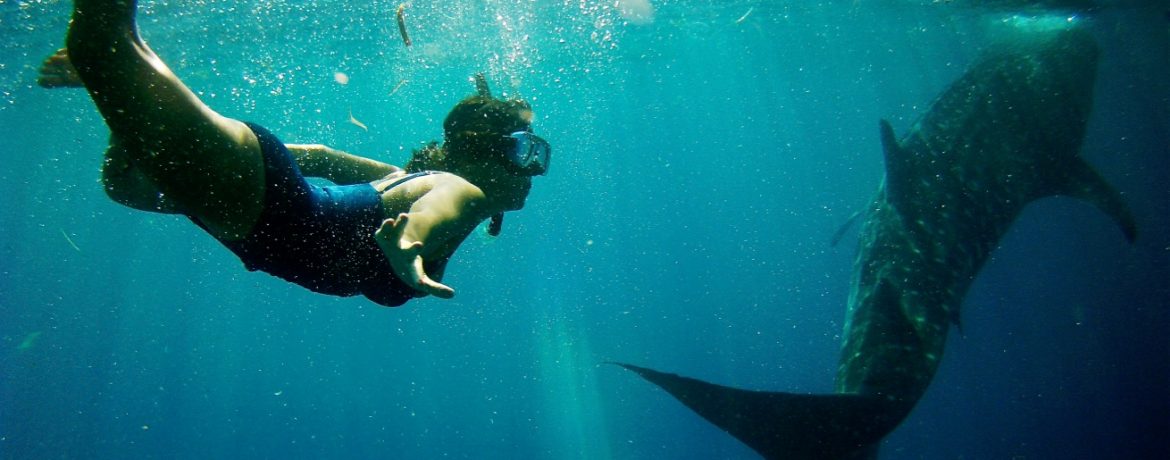
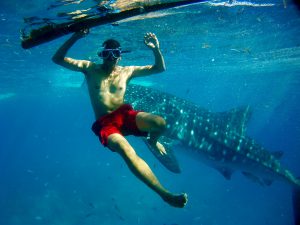
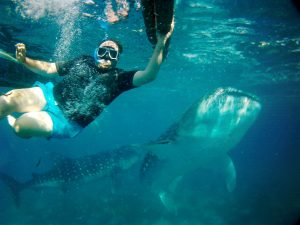
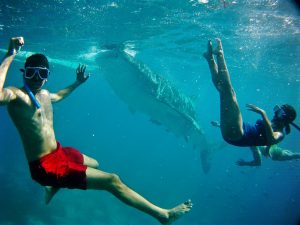
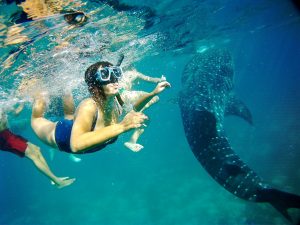
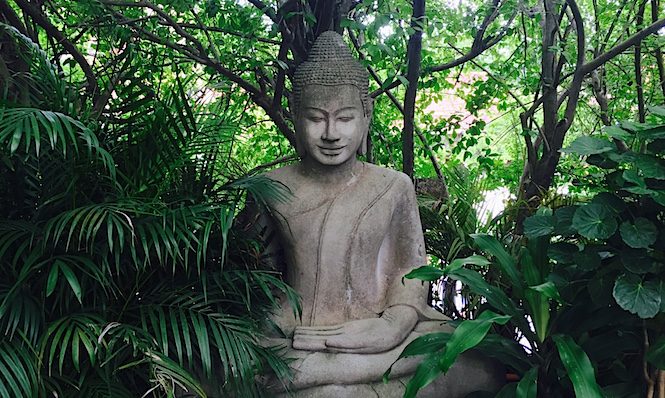
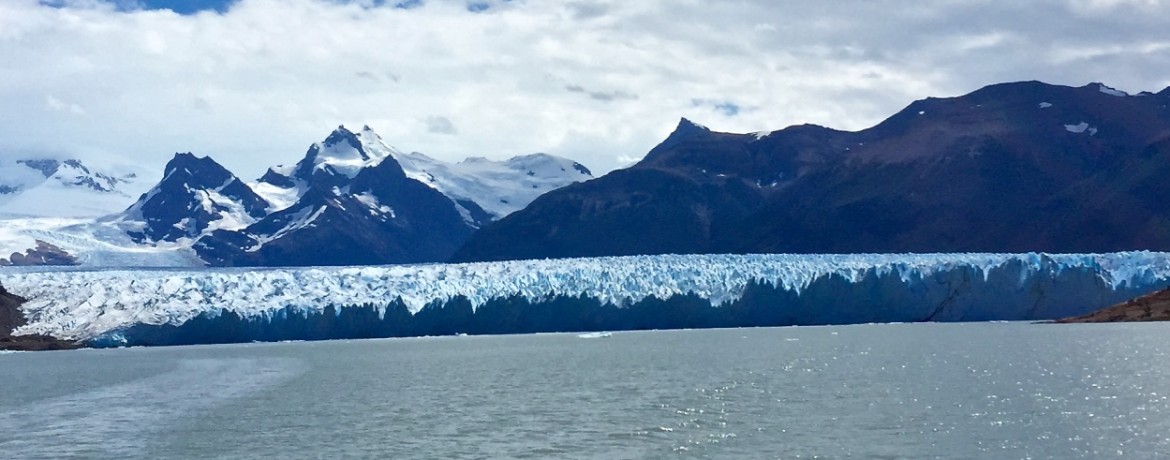

2 Comments
Oh, Mary and Vikram! How I admire your willingness to actually LIVE your lives the way you choose.
Wow! Great photos of the whale sharks. This is really amazing. Thanks for this one.